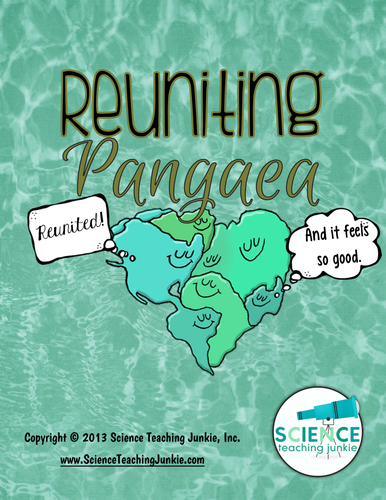

In this 2 part-lesson, students will collect data on fossil evidence and create their own landmass map with various colors to represent the locations of fossil discoveries. Then, they will cut out the landmasses and reassemble them logically to create a giant supercontinent (Pangaea). Students will share their decision and reasoning on the evidence with their group or partner, along with answering 4 conclusion questions.
The teacher will post the correct landmass model key and students will glue their Pangaea into their science notebook.
On Day 2, the teacher will read a passage on Alfred Wegener. Students will receive 10 sentence strips from the teacher and will use context clues to sequence the strips to create a timeline representing the historical development of the plate tectonic theory. At this point, the class can have a gallery walk and discuss the event sequence (optional).
The lesson will conclude with students answering conclusion questions over the 2-day lesson and writing a summary in their science notebook describing the historical evidence that supports the plate tectonic theory.
The teacher will post the correct landmass model key and students will glue their Pangaea into their science notebook.
On Day 2, the teacher will read a passage on Alfred Wegener. Students will receive 10 sentence strips from the teacher and will use context clues to sequence the strips to create a timeline representing the historical development of the plate tectonic theory. At this point, the class can have a gallery walk and discuss the event sequence (optional).
The lesson will conclude with students answering conclusion questions over the 2-day lesson and writing a summary in their science notebook describing the historical evidence that supports the plate tectonic theory.
Something went wrong, please try again later.
Report this resourceto let us know if it violates our terms and conditions.
Our customer service team will review your report and will be in touch.
$5.00